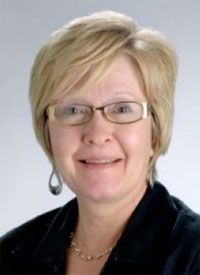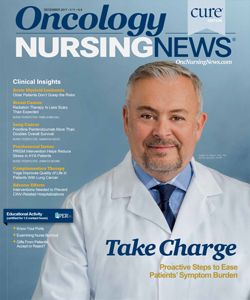Four LinkedIn Strategies You Can Employ for Nursing Career Success
Carol Bush explains a few key strategies to make LinkedIn work for your nursing career.
Carol Bush, BS, RN

Carol Bush, BS, RN
I was combing through my connections on LinkedIn recently, when I noticed a former colleague’s job title had changed.
Since I always tell my nurse entrepreneur clients that they should never stop networking, I took my own advice and fired off a congratulatory email.
My contact wrote back and said she was excited about the new position. I did what any good connector would do and suggested we meet for “virtual coffee” using my web meeting platform.
We met and in the process of getting caught up, I explained my efforts to expand my consulting business by offering blog coaching services. That conversation turned into a freelance job for me!
Traditionally, applying to a job meant making a cover letter and resume. In today’s digital age, this is fast becoming almost obsolete. Robert Hellmann, author of Advanced LinkedIn for Your Job Search, Business & Career, relates that one of the most important job search trends is what he calls “the continuous job search.”1
Unemployed people should maximize their social media use, he says, but the rest of us shouldn’t be slackers if we want to make sure we don’t miss out on opportunities. “It’s a lot of work,” Hellmann writes, “but you really have to keep your network active and constantly develop and expand it.”
Keeping track of your career used to be done privately in a file at home. Now social media platforms like LinkedIn make it possible to keep track of your career and accomplishments in a systematic way and share it publicly.
This is helpful for 4 reasons:
- LinkedIn provides a centralized place for regularly recording what you have accomplished.
- It’s a tool to share in real time what you have done and allows others to view your experience in a multimedia friendly platform. Think articles, blogs, video interviews, poster presentations.
- Showcasing your experience can lead to new career opportunities from recruiters or others in your professional network.
- In today’s gig economy, having a well-written LinkedIn profile is a great tool to transition your career to freelance or consulting work.
What else should we all be doing to maximize LinkedIn’s powers?
Hellmann suggests the following:
Keep up with your network. When was the last time you went through all of your LinkedIn connections and figured out who had changed or lost jobs, started a new business, or written new material? Simply clicking through your list will clue you into all sorts of news and give you the opportunity to reach out to folks with whom you’ve been out of touch. It takes a moment to send out a quick note of congratulations. Just. Do. It.
Post updates. Did you get a new job? Has your title changed? Did you switch departments? Did you see a great, relevant article? Sharing updates helps those in your network reach out to you.
When someone you don’t know sends you an invitation to connect, hit “reply.” That will bring you to a return email with the sender’s address. Rather than accepting the invite through LinkedIn, it’s better to send a query. Here’s what I use:
“Hi X, I appreciate your invite to connect! As I like to know all the people in my LinkedIn first-degree network, I’m curious how you came across my profile and/or why you decided to reach out.” After all, it’s your professional network. Fill it with quality connections!
Publish on LinkedIn. This can take effort but I am a huge champion of publishing posts in your field of expertise on LinkedIn. This helps to establish you as a thought leader. It can be especially helpful for job hunting if you have gaps in your résumé or you’re trying to change fields. It’s also a great way to connect with new people! My favorite resource? Check out Hubspot’s How to Publish on LinkedIn: A Beginners Guide.2
When LinkedIn introduced this feature in early 2014, I decided I would try it out for fun. The second post I uploaded was picked up as a feature in the Careers section of LinkedIn. Imagine my amazement when my phone notifications started blowing up! The post was viewed 750 times in 24 hours—my one claim to viral fame. Because of that post, I connected with several new people, two of whom became key social media clients!
It’s important that we not spend all of our time online. However, if you’re starting a job search, a day on LinkedIn can be a day well spent, especially if you use it to research the profiles of people where you want to work, make connections with them, and set up meetings.
If you have a job, but take to heart Hellmann’s advice that you should always be looking, spend 15 to 20 minutes 3 times a week reviewing your connections, commenting on updates or posts, and reaching out for virtual meetings.
Do you have a LinkedIn success story? Drop me a line at carol@thesocialnurse.com. I’d love to feature your experience in an upcoming blog post! ___________________________________________________________________________________
Carol Bush, BS, RN (@cbushrn) is an oncology nurse navigator with the Midwest Cancer Alliance. She has a passion for helping medical teams learn to embrace innovation and thrive in a patient-focused environment. An ardent advocate of social media in healthcare, she especially enjoys working with care managers, health coaches, and nurse navigators.
____________________________________________________________________________________
References
1. Hellman R. Advanced LinkedIn for Your Job Search, Business, and Career. 2015. New York, NY: Robert Hellmann LLC. http://bit.ly/2cXdnPZ.
2. HubSpot. Stec C. How to Publish on LinkedIN Pulse: A Beginner’s Guide. http://bit.ly/2d034cd.

Innovative Program Reduces Nurse Turnover and Fosters Development
Published: September 12th 2024 | Updated: September 12th 2024The US Oncology Network (The Network) has developed one of the most comprehensive programs in the nation to support the professional development and retention of new oncology nurses.


